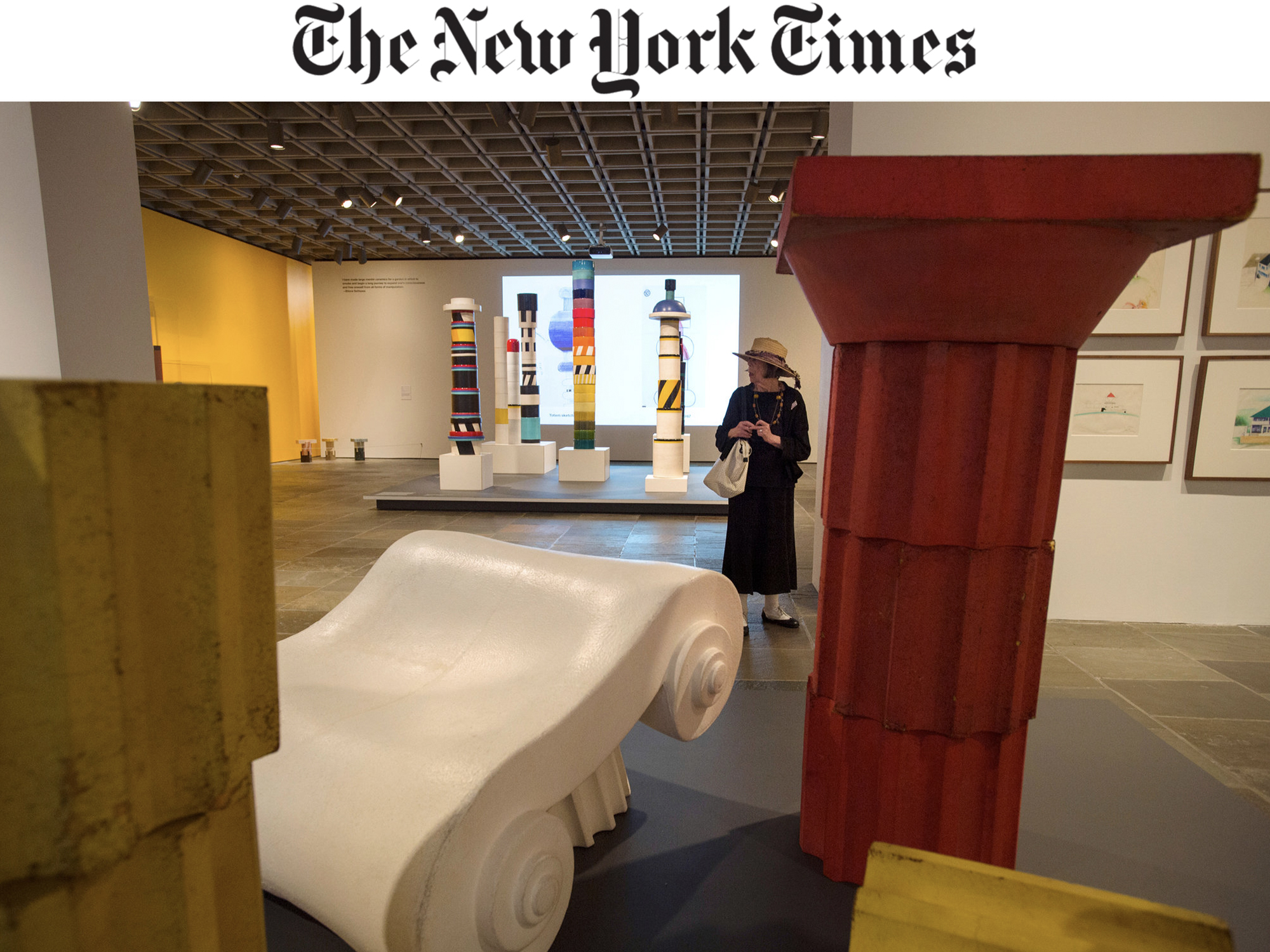By Roberta Smith
Ettore Sottsass. You can’t always live comfortably with his eccentric furniture, but you can’t write the history of late 20th-century art without it. On the 100th anniversary of his birth and only a decade since his death in 2007, the Milanese maestro best known for his red Olivetti portable typewriter and as the guru of the revolutionary postmodern design group Memphis remains a magnificent irritant and an exemplar of originality.
Unsurprisingly, “Ettore Sottsass: Design Radical” at the Met Breuer has a combative air. You may argue your way through it, and also take issue with some of its contextual artworks — this show is nearly half non-Sottsass — but it is an invigorating, illuminating experience.
The largest Sottsass show staged in a New York museum, and one of a celebratory crop for the centenary, it provides a broad picture of the origins of this architect/designer and of Memphis itself that few are familiar with. It details his influences and inspirations with artifacts from Egyptian, Indian and other non-Western cultures; examples of European and American modernism, as well as designs by Sottsass’s Memphis contemporaries (especially Peter Shire and Shiro Kuramata) and also some acolytes, misguided and not.
…










